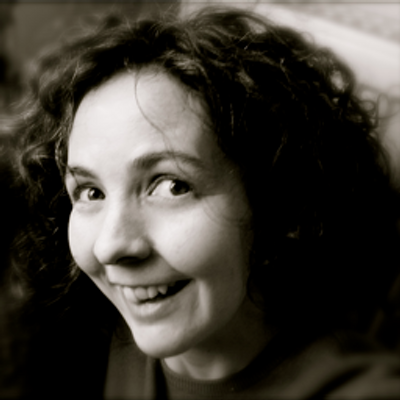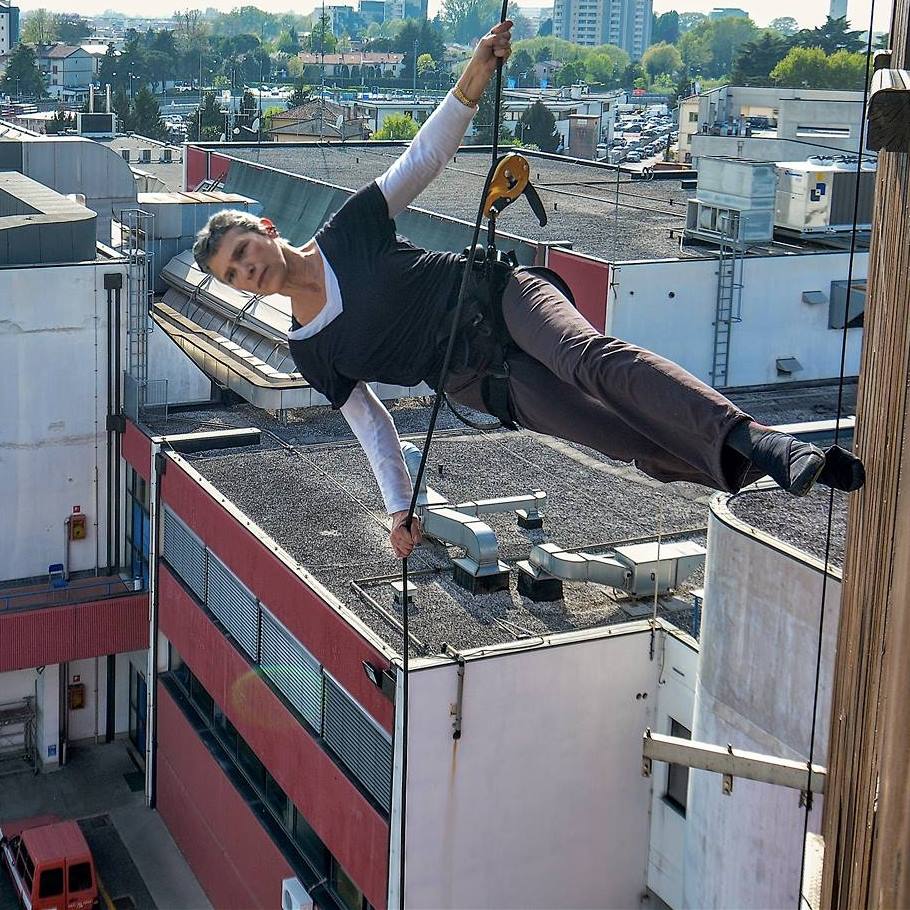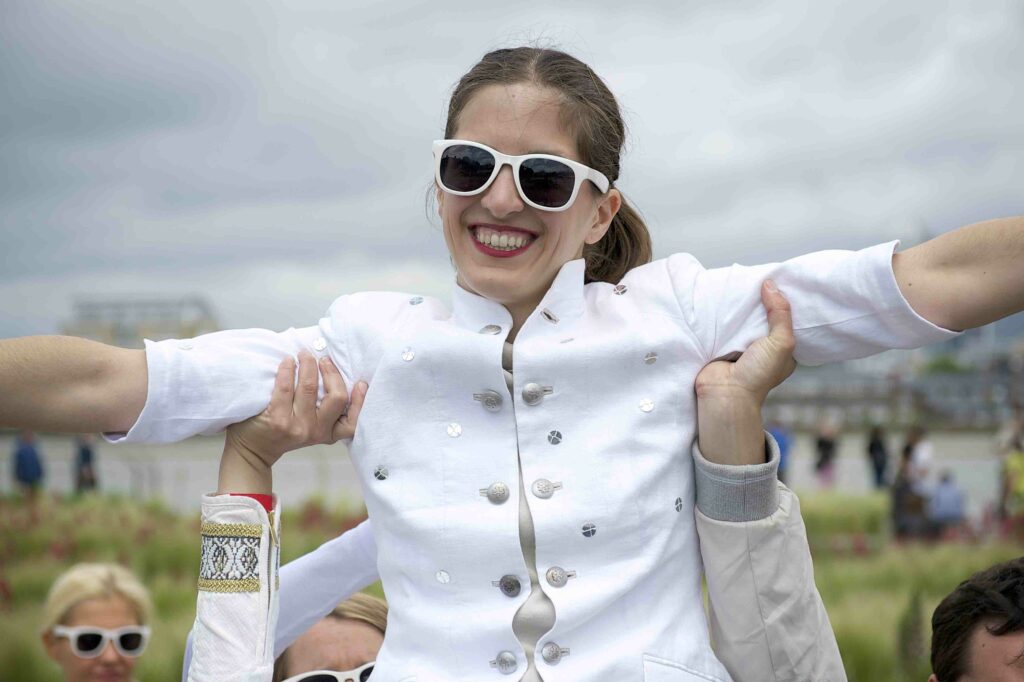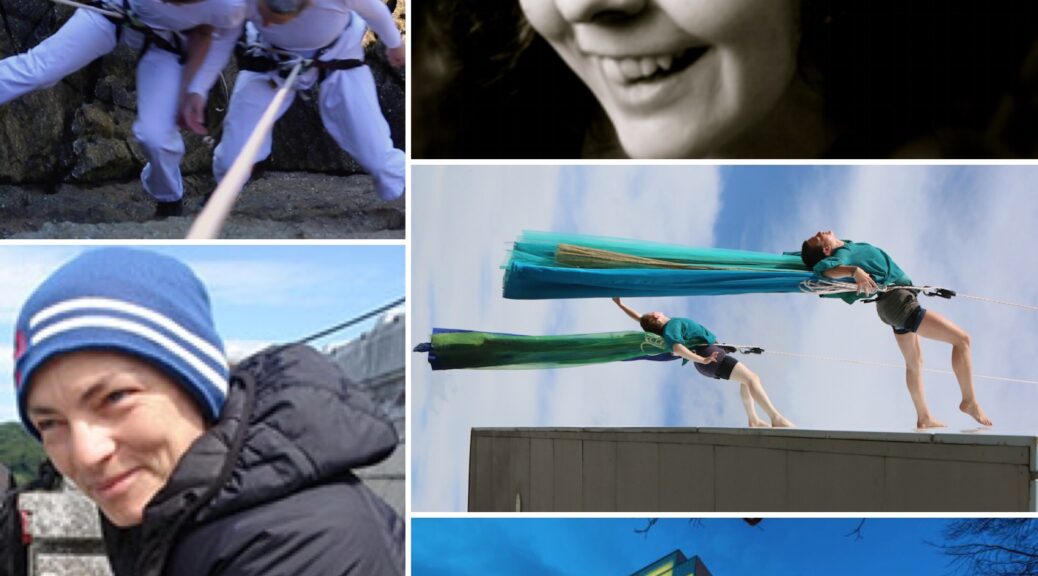
Kate Lawrence 
Joanna Wright
Hi Kate and Jo, great to meet you, can you give our readers some background information on yourself please?
Kate: I was born in London and spent my early years in Tanzania and Mexico before returning to the UK aged 11 to go to a quaker boarding school in North Yorkshire. After school I trained as a dancer at Thamesdown Contemporary Dance Studios in Swindon and then did a BA in Dance Theatre at Laban, in London. Then I started a feminist dance company called Nomads which ran from 1989 – 1995, doing performance and education work. When the company ended I spent a few years doing all sorts of things, car maintenance courses, creative writing courses, stunt training, delivery driving, caretaking. Then I got a job as a dance lecturer at University of Surrey where I spent 10 years. In 2010 I moved to North Wales to be in the mountains and feed my passion for rock climbing. I got a part-time job at Bangor University as a lecturer in performance. During the 10 years I have spent here, I began my own vertical dance company, Vertical Dance Kate Lawrence (VDKL).
Joanna: I’m an artist from North Wales, I grew up on the coast near Conwy. I left Wales when I was a teenager to study art. I ended up living in the USA, working in a really eclectic range of jobs that included furniture maker, running a market stall, selling pizzas, working in a shoe repair shop, photographer for the US government and then working in the art department of film and theatre productions. In 2001, shortly after September 11th, I got a job as a videographer on a sailing boat doing a global circumnavigation, as part of an pioneering interactive, online education project. That was a turning point that eventually bought me back to Wales and took me into working in documentary, in many different forms.
What got you interested in the arts?
Kate: I come from a family of professional musicians on my father’s side (although my father was an amateur) and my mother is a visual artist and potter so I grew up in an arty environment. I did a lot of dancing alone in my bedroom as a child – the pandemic has reminded me of this as I have returned to my bedroom as a dance studio. I think what I love about the arts is that it is really a way of thinking, a way of being in the world that is centred on experience, expression and communication.
Joanna: I grew up with a parent who had a severe mental illness. In the 80’s in North Wales mental health services were poor to non-existent, both for those with mental illness, and their families. In the arts I found a way to express ideas and connect with others that I hadn’t been able to previously. I specifically credit the generosity of the wonderful artist and teacher Dave Pearson who I met as a young art student, he saw some of the weight I was carrying at that time and encouraged me to tell stories with my work and experiences, and also to find playful ways to get it out into the world.
Kate I believe you are working on a new project called ‘Portrait and Landscape’ its described as “a series of online bi-monthly events for the international vertical dance community and beyond. It was conceived by Wanda Moretti in collaboration with Kate Lawrence and Lindsey Butcher. The series runs bi-monthly until the end of October 2021 “.
For those who may be new to the term what is ‘Vertical Dance’ and how did you come to be involved ?
Kate: Vertical dance is a newish term that refers to dancing in suspension – the dancer is suspended using climbing or access equipment, such as harnesses, ropes and abseil devices. Often this is against a vertical wall (hence the term vertical) which becomes the ‘dance floor’. So it often takes place in public space, on the sides of buildings.
I got involved with vertical dance when I started climbing in the late 1990s – as part of training to be a stunt woman (that never happened!). I found the movement of climbing very similar to dance and when I began teaching at the University of Surrey I asked if I could run a module called vertical dance. That began in 2001 and was the beginning of my development of the practice. I began teaching dancers to climb in the climbing wall and getting them to develop choreography from that and then gradually I introduced suspended dancing. In 2005 I embarked on PhD study into vertical dance and that led me to meet other vertical dance artists from around the world. The first two I met were Wanda Moretti from Venice and UK- based Lindsey Butcher, and we are still working together. I finally finished my PhD in 2017 – it took me a long time because I was working and creating at the same time!

Kate, what is your ambition for Portrait and Landscape?
During the pandemic it has been impossible to do vertical dance practice for me and I spent 2020 doing other things – gardening mostly and some writing – this has been quite a healthy break from a very busy time. This series of events was the brainchild of my colleague Wanda Moretti and she invited Lindsey and I to collaborate with her on running it.

The ambition is to bring international vertical dance artists – and anyone else who might be interested – together at a time when we are all isolated and distanced. The current time is an opportunity to connect across borders and learn about how different artists practice the form and also to keep our artistic minds working! My company, VDKL, has received some funding from Wales Arts International to support this project which means we have offered 3 bursaries to Welsh artists. It also enables us to explore making the series more accessible.
You are both working on a project researching into Dance for people who are blind, this sounds fascinating please tell me more!
Kate: Yes, Jo and I are working on a project called Yn y Golau/In-visible Light, which began in 2016 as a collaboration between myself and photonics scientist Ray Davies – a Synthesis project funded by Pontio.

Photonics is the science of light – I didn’t know that until I met Ray. The project developed and in 2019 we did a research and development project funded by ACW with a couple of test performances. Our purpose was to make a show that tried to build accessibility for blind and partially sighted people into the creation process, rather than audio describing a finished product. It was a huge challenge and we were assisted by a visually impaired actor and aerialist, Amelia Cavallo.

We constantly asked ourselves: what would this experience be like if we couldn’t see? And this led to some new ways of working for me as a choreographer. Sometimes I would close my eyes and listen to the dance… It also reminded me that dance is a kinetic art form not a visual one. Sometimes I think we focus more on shapes we see than movements we feel. We invited blind audiences to the test performances and then interviewed them afterwards to get feedback on how successful our approach was. We then received further funding from ACW to develop a touring show, but the pandemic has made us change our plans. We are now working on a film and we also have some seed funding from Clwstwr to do further research into access for blind and visually impaired people to performance.
Joanna: Kate first asked me to work on Yn Y Golau as a documentary filmmaker. In my work in documentary I’m especially interested in how new technologies can be used in storytelling. In Yn Y Golau I felt there was potential to explore how to share the work in an interactive, non linear way, which might better enable us to think about how to move beyond the screen, and think more deeply about how the embodied experience, that was central to Kate’s live work, can be expressed or shared digitally. There are also a lot of documentary elements in the project, and we are exploring how the project audience can choose which aspects they want to engage with.
Prior to this project did you have any knowledge of areas such as audio description for theatre/dance?
Kate: Yes, I first started thinking about audio description back around 2008 when I was asked to do a workshop at an audio description seminar at University of Surrey. The topic then lay dormant for me for several years, and then in 2016 I was asked by Mari Emlyn to make a piece of work for the foyer of Galeri. It was the year of the centenary of Roald Dahl’s birth and so we made a new story built from the drawings of primary school children of their favourite Roald Dahl characters. The piece was called Omnibus and was performed in the foyer of Galeri with the dancers flying in the space overhead.
We created a bilingual (Welsh and English) recorded audio description alongside the soundscore so that everyone in the audience could hear it. From our current research I know that this is sometimes referred to as ‘open audio description’. The traditional method is that an audio describer is in a booth describing events as they unfold, straight into the ears of the visually impaired person, who wears headphones. Headphones can however be distancing, muffling and isolating so I felt it was important to search for ways in which to make the work with accessibility built in.
Joanna: Absolutely none, and that is really motivating me. When I started looking and learning about it, I am not proud to say, I realised how I had never really considered this aspect in any meaningful way. I know I was also, unfortunately, in a majority.
If a dancer wanted to stay and train in Wales and then pursue a career, what support system would you suggest they require in order to be able to do this?
Kate: I can only speak for North Wales, where it is virtually impossible at present for a dancer to train in the conventional, vocational sense – I think there is more capacity in South Wales, but even there options are limited. To make a career entirely in Wales I think it is necessary to take every opportunity available and to be very self-motivated and resourceful. VDKL employs mainly North Wales based dancers, who I have trained in vertical dance techniques. This is because I want to build a community here, however small it is! The dancers I work with have trained in dance outside Wales and returned. I also want to provide employment opportunities for local artists and persuade them to stick around! My company used to run affordable twice weekly training sessions of 3 hours each but we lost our space in 2017, and now with the pandemic training has become impossible. But we are hopeful for the future – the beauty of vertical dance is that we can go outside! In an ideal world a dancer building a career in Wales needs regular affordable access to dance training sessions and also affordable access to space to dance. A vocational/degree programme would also be very helpful.
Are there any examples of training systems or support networks that exist in other nations that Wales could look to utilise?
Kate: France has a great system of support for artists that pays them whilst they are ‘resting’ between jobs. This gives them time and financial support to continue their training and professional development. Many European countries have arts centres that offer space and residencies for artists. Access to affordable space to practice is essential and it would be great if each region of Wales had dedicated spaces or ‘homes’ for dance. I have been doing daily practice sessions during lockdown with Wainsgate Dances in Hebden Bridge, England and this is an excellent example of an artist-led initiative that has built a community of dancers who are now contributing to the provision of residencies for other artists at the centre.
Joanna: I’ve been very inspired by people who have built their own networks where none exist. I’m part of the Arts Territory Exchange project, it facilitates collaborations in remote locations that are cut off from the networks which usually sustain a creative practice. I think as an artist it’s very important to be part of a community of support, to develop and challenge your work and ideas, and to share skills with others. There are some great DIY examples out there, the Artist Residency in Motherhood set up by Lenka Clayton is another inspirational network
What does Wales do well in dance or cultural training and delivery?
Kate: In my experience support for the arts in Wales is a friendlier affair than my previous experience in London and the South of England. I have found local venue managers and programmers to be great collaborators and the Arts Council of Wales officers are approachable. I think cultural training and delivery in Wales is ‘on a shoestring’; the positive side of this is that it is extremely adaptable and mobile – it has to be due to the geographically dispersed activities. But it needs centres too, and not just in Cardiff. The bizarre thing is that it is quicker to get to London than Cardiff for North Wales dance artists looking for training.
Joanna: In my experience Wales supports it’s creatives well and gets a lot out of small budgets. However there are real impacts currently in relation to access to arts education, and the financial barriers for those who want to study. I feel strongly that this will further negatively impact diversity in the cultural sector. About the centres that Kate mentions, I’d say something about the impact of Covid this last year, there has been more cross Wales collaborative working, in my experience, which is great, but the Cardiff region still has a hegemony in terms of cultural projects, and I’d like to see that be distributed more widely across Wales.
Get the Chance works to support a diverse range of members of the public to access cultural provision. Are you aware of any barriers that creatives in Wales face? If you are what might be done to remove these barriers?
Kate: Well we are working on access for blind and partially sighted audiences. Our research so far is showing that provision for these audiences, particularly for dance, is very limited. A perceived barrier is that it costs of a lot of money to provide access and independent artists/small companies with very limited resources can’t afford to spend extra money; this is also true for the larger companies. I would like to challenge artists to see how they might begin to build accessibility into their work so that it can be appreciated by all. A big barrier for many in rural areas is getting to and from performances, so any schemes that provide transport can be really helpful.
Joanna: To build on my comments above, barriers to access can be many, including financial, but there’s also a lot of potential positive learning from the online way of working that’s been adopted because of Covid. Personally, as a carer and parent of a school age child I’ve been able to take part a lot more, due to events being online. It would be a shame for this to be abandoned when things open up physically, because in my opinion it’s cracked open cultural provision MUCH more widely. I’d like to see ways of live-online access being continued for people who can more easily engage in this way, and supporting people where access to stable internet is an issue.
With the roll out of the Covid-19 vacancies, the arts sector is hopeful audiences will return to venues and theatres. If theatres want to attract audiences what do you think they should do?
Kate: I think first and foremost, theatres need to ensure that they are safe spaces and then market that fact very clearly. Perhaps look at small, socially distanced audiences, and commissioning work for this kind of audience. Working outdoors is a great option for providing safer access to arts and this can then be a draw for people to return to the theatre.
If you were able to fund an area of the arts in Wales what would this be and why?
Kate: Dance of course! I think dance is always the Cinderella of the arts and tends to receive less subsidy. We all have bodies – we all move – and our physical and mental well being can be enhanced through dancing. I would love to see the creation of small dance centres around the country so that local artists and the community in general have somewhere to meet and dance. They don’t have to be for dance exclusively, but should provide the space necessary for dance – and rigging points for vertical dance of course.
Joanna: Really good interdisciplinary arts education. The studio based art college system that supported so much groundbreaking creative work across the UK has been decimated. Artists are great problem solvers, and skills in the arts are widely transferable.
What excites you about the arts in Wales?
Kate: I love the maverick nature of the arts in Wales. People are making work in the most surprising places and this gives rise to exciting new techniques and approaches.
Joanna: It’s collaborative & supportive, there’s some great, innovative work happening in cross disciplinary settings. The arts in Wales is embedded into our culture in quite a unique way, the Urdd does amazing work with children and young people. There were 12000 creative works across music, dance, spoken word and visual arts made by children who entered the online Eisteddfod T this year for example- That’s amazing!

What was the last really great thing that you experienced that you would like to share with our readers?
Kate: In our last Portrait and Landscape event San Francisco based choreographer Jo Kreiter shared with us her project called ‘The Decarceration Trilogy’ a long term project looking at the US prison system and its effects on citizens. It was a really moving and inspiring offering to our community and a great example of the power of dance and the arts in general as a tool for examining issues of social justice. Here is a clip of Jo talking about her work in general
and here is a link to a film of The Wait Room that she showed during our event:
Joanna: I am currently a research fellow at the Open Documentary Lab, MIT where I recently saw a presentation of Hatsumi VR It is an amazing project in development that uses virtual reality to allow participants to visually express experiences of pain, emotion and sensory experience in audio visual body maps.

